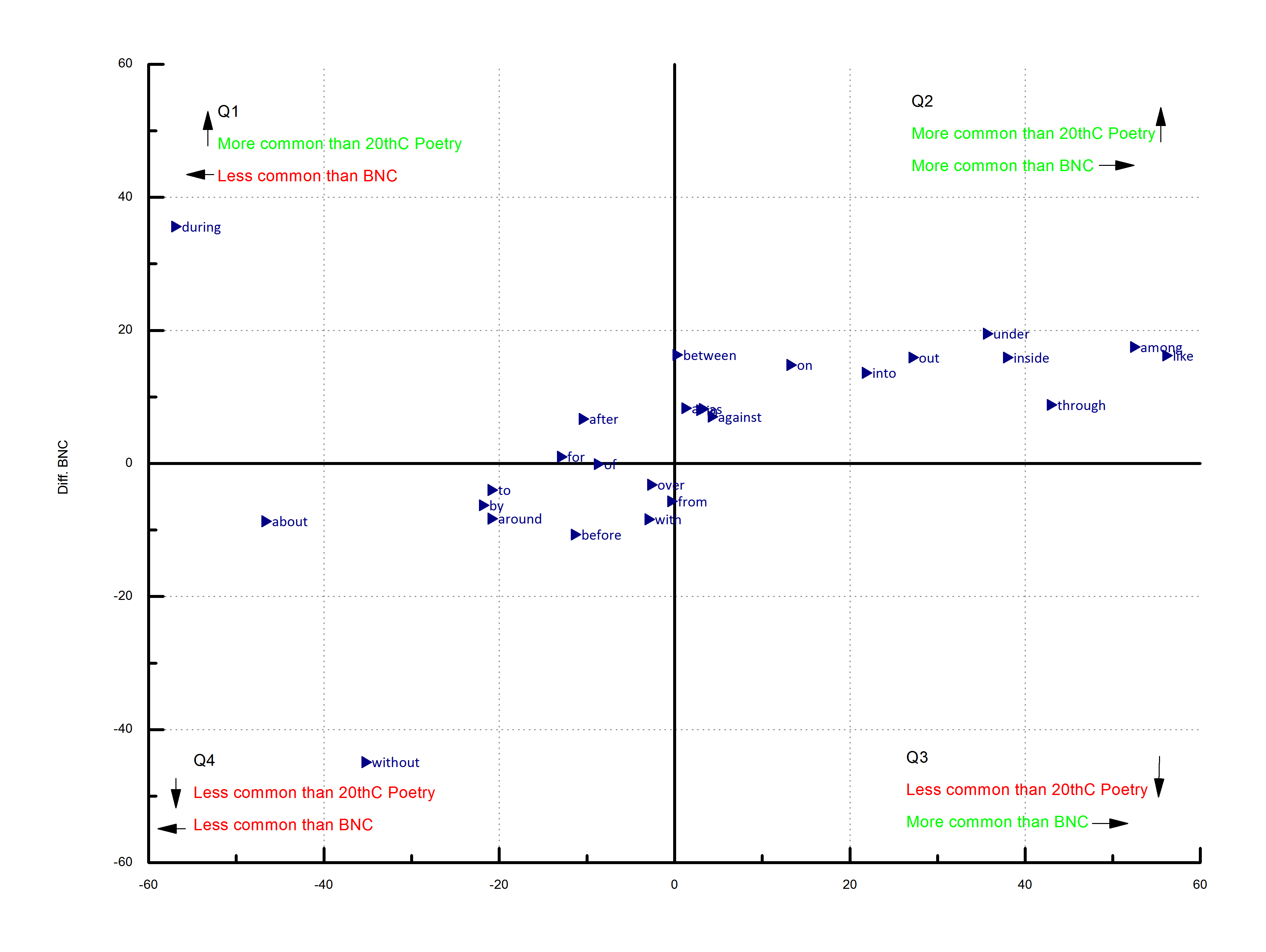At last weekend’s Seamus Heaney conference and commemoration at Queen’s University, Belfast, I gave a paper in which I referred offhandedly to “a pretty conventional way, by now, of understanding his poetics” as in some way conditioned by a sense of being “in between”, which goes back to the first word of the first poem in the first book: “Between my finger and my thumb, | The squat pen rests; snug as a gun.” [cf. Geoffrey Hill’s self-founding debut, in “Genesis”: “Against the burly air I strode | Crying the miracles of God.”]
Afterwards someone commented that he thought all the “between” stuff in Heaney had been a bit overblown, and said something like “if you ask those corpus guys they could tell you right away, but I wonder if he really uses it much more than other prepositions.”
Well, I didn’t get a chance to reply to this, but what I thought at the time was, “what the corpus guys can tell us is totally irrelevant to the point”, which is about the conceptual relation represented by a particular preposition becoming paradigmatic of an attitude to life, as figured in a body of poems.
But then I thought, well, I’m kind of a corpus guy, so what the hay. Here I’ve collected some counts and frequencies of the 25 or so most frequent prepositions in the Heaney corpus (Opened Ground plus the three subsequent trade collections), and compared them to a large corpus of 20thC poetry, and the British National Corpus (BNC).
What you see below is the raw count of the word in the Heaney corpus, followed by its frequency per million words, the fpmw in both the BNC and my large poetry corpus, and then a measure of difference between the Heaney frequency and the frequency in the other corpuses, respectively. The difference measure is, as before, a log measure (calculated 100*log10(f1/f2)). I’ve ordered the list by the last difference measure, meaning that the higher on the list, the more Heaney overuses the word, compared to other 20thC poetry.
[ws_table id=”27″]
And here, in graphic form, are the final two columns, plotted on axes representing the relative frequency vis-a-vis 20th C poetry (Y axis) and BNC (x axis). This means that the father right a word appears, the more Heaney overuses it compared to the BNC, and the higher up, the more Heaney overuses it compared to other 20thC poetry. Negative values mean that the word appears less frequently in Heaney than in the respective corpora. [if it’s showing up smooshed or you can’t read the labels, click on the image for proper display]
Well, perhaps you could make something out of this. Perhaps not. To my eye, it’s somewhat intriguing that “like” shows up so much more frequently in Heaney than in other poetry of the time (implying perhaps a particular tendency towards the simile). Also worth investigating might be the outlier “during”, which is used way more than most poetry, and way less than in regular speech (for which BNC is the stand-in, here). “Through”, “among”, and “inside” are also somewhat interesting and may be worth attending to.
But what about “between”, which is fairly overrepresented compared to most poetry, but not wildly so (“during”, “under”, and “among” are more-so), and shows up almost exactly as often in Heaney as it does in the BNC? I would argue that this is a case where word frequency is just a terrible indicator of significance, and more than that, that it’s a cracking example of the pitfalls of taking word frequency as a heuristic measure of importance.
And all I have to make good that argument is a sense I have developed from fifteen years of closely reading Heaney’s work. To work it out fully would involve a long critical essay, or at least a bibliography of others who have written on Heaney’s “betweenness”. Short of that, though, I’d ask anyone to think about the path between that first word in that first poem in that first book, to this poem in the final book, a translation of Guillevic’s “Étier,” which contains the following section:
Between heather and marigold, Between sphagnum and buttercup, Between dandelion and broom, Between forget-me-not and honeysuckle, As between clear blue and cloud, Between haystack and sunset sky, Between oak tree and slated roof, I had my existence. I was there. Me in place and the place in me.
Seven out of seventy-eight “betweens”, here. But so much more than nine percent of this poet’s stance towards life, place, and space.

[…] related discussions, see “how different is poetic diction”, “Seamus Heaney in Between”, “From London to Potato: Seamus Heaney in Graphs” and “Measured Words”, all at the […]